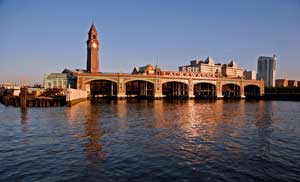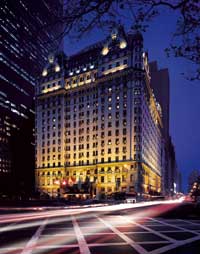Unique Business Model
Holding a critical and relevant role at the World Trade Center certainly fits into the Tishman mission. But becoming the largest contractor in the region does not.


“So one of the things in 2008 that was really remarkable for us was, as still a privately held family business, to be able to achieve such a large volume of work,” Tishman says. “Our goals have never been to be the biggest. We can’t compete – we don’t have a big brother somewhere.”
But he says he would never trade the freedom private ownership affords. “We don’t start the year with a budget that says, ‘We have to grow 15% year-over-year.’” Tishman says.
One result of that freedom is being able to set strategy. Tishman Construction has long favored construction management without risk as its primary business model. But it also has about a third of its projects in the CM-at-risk world – underscoring how it is tactically flexible enough to make decisions project by project.
That same freedom also allows the company to adjust quickly to market conditions or diversify into cooler sectors to be in position for future swings, Tishman says. “We didn’t, like many construction companies, gamble 100% of our future opportunity on residential construction in the last boom,” he adds. “Some would say we missed out on some opportunities. We did our fair share. But our business sense required us to be more diversified even during the boom times.”
BTEA’s Colletti says that strategy has left the company in a good position, especially in the unsure times the industry now faces. “They have diversified themselves in enough markets that they’ve been able to protect themselves from the strengths and weaknesses of individual markets,” he says. “They’re not dependant on solely one or two markets to remain profitable. They’ve been incredibly smart.”
And Badame says Tishman is stocked through 2011. “We’re feeling very secure about our future but not secure enough that we’re not looking at ways to advance our business,” he adds. “We’re looking in areas that are counter-cyclical to the [economy], such as healthcare, laboratories, pharmaceuticals, universities, K-12 schools, data centers, energy, utilities and the stimulus dollars, as well.”
John Livinston, Tishman’s president of corporate operations, adds that the company is also now offering advisory services for clients in distress that can use its combined real estate and construction expertise.
And now Marchetto, the company’s newest addition as president of construction operations, says he sees one of his roles is to help Tishman guide clients through the rockier shoals ahead, working with design consultants and an owner’s budget to devise economic solutions. “The companies that will be successful…are the ones that have the talent to go beyond just building a building,” he says. “It’s trying to figure out how to make a building affordable and how to make a deal go forward.”
Wherever the work takes them, Dan Tishman says the company’s New York roots will always be at the emotional core of the firm.
“This town has been really good to us,” he says, surveying the Lower Manhattan skyline. “There are few places in the world that a company like ours could be. I don’t know if my great-grandfather knew that when he started out, but it’s certainly worked out that way.”
With Tom Stabile



Post a comment to this article
Report Abusive Comment